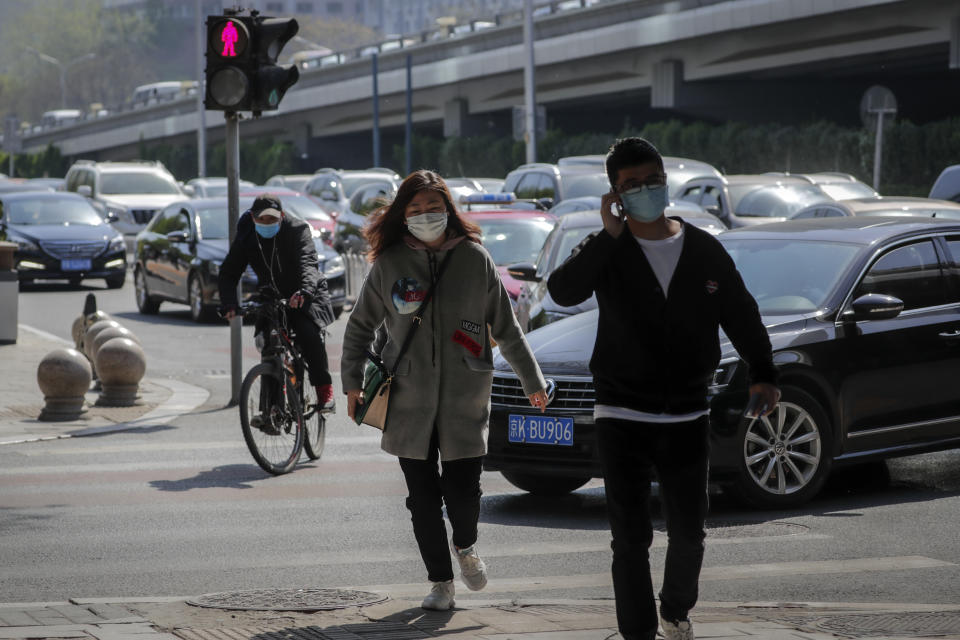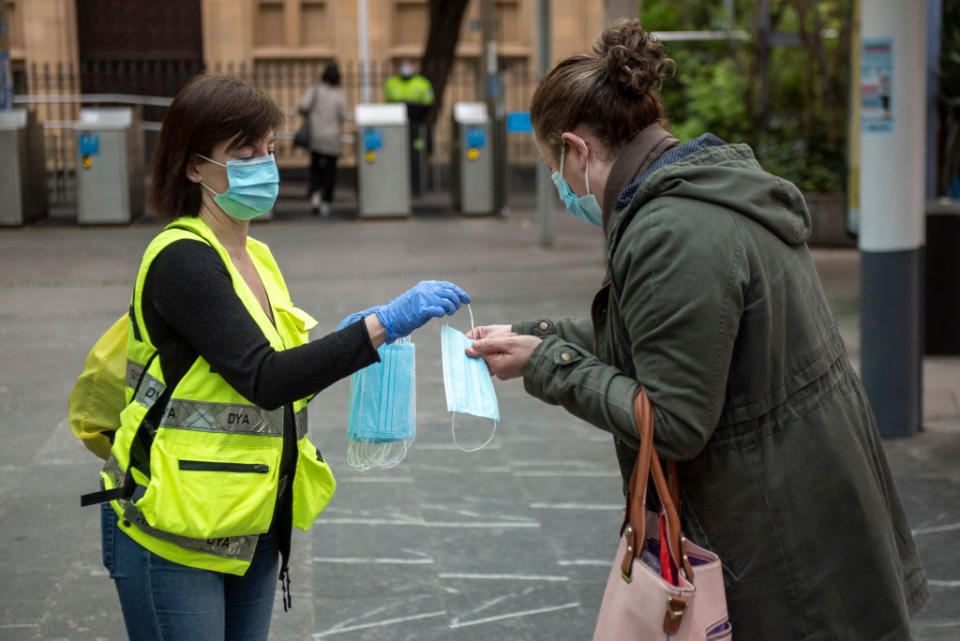How five other countries eased lockdown rules - so is this what's next for Australia?
It’s the burdening question on the lips of millions of Australians amid the nations’s ongoing fight against coronavirus.
Exactly when will Australia begin lifting the restrictions it currently has in place and which will be the first to go?
Understandably, it’s a question that the federal and state governments have been reluctant to give a definitive answer to, in part to prevent false hope across the nation in an ever-changing scenario.
After all, Scott Morrison continues to stress this is at a minimum a six-month process.

Even though the current measures have contributed to flattening the curve, the government continues to stress the pandemic is far from over to avoid Australians adopting a lackadaisical approach to the task at hand.
Australian politicians have repeatedly said they will tread with caution moving forward and governments will carefully analyse data and modelling before any decisions.
But another key contribution appears to lie in what other countries are doing.
Federal Health Minister Greg Hunt said on Thursday the country’s hard work so far had bought time to observe the rest of the world before making any decisions.
"We are in the fortunate situation of having a lower rate than the vast majority of the world per capita, and that means we can look at what is working and what is not working in some countries,” he said.
Such observations will have ramped up last week when Wuhan lifted its travel restrictions which had been in place for 76 days and further analysis is expected in the coming weeks as several countries, some which are still in the midst of a severe outbreak, began easing restrictions to help rescue a badly-depleted economy.
So what is happening around the world when it comes to easing restrictions? Here is a breakdown of what other nations are doing now, which may influence what Australia could expect in coming months.
China
In a landmark moment for the country, authorities lifted the most stringent lockdown on the planet on April 8, ending Wuhan’s travel restrictions and allowing healthy residents to travel freely within China.
And while residents can once again leave Hubei’s capital, the original epicentre of the virus, temperature checks are still widely in place and several high-risk communities are still under lockdown.

Returning to normal life appears to be a slow process, with streets still a far cry from the previous hustle and bustle a city of 11 million was once accustomed to.
Handfuls of people line the streets while public transport is up and running once again, albeit with far fewer passengers.
Over 90 per cent of all businesses have reopened, authorities say.
Around the rest of the country, China appears to be returning to normality, with bars, restaurants and public spaces now widely open, albeit with social distancing measures.
Yet there are fears too much too soon could prompt a second wave and there are already fears a cluster of cases in the southern city of Guangzhou could develop into a new epicentre.
There is also a growing number of cases in the northern province of Heilongjiang, which borders Russia and where many of its cases have derived from.
China continues to report low numbers of daily cases yet activity witnessed at the start of April prompted concern globally.
Images from China’s Yellow Mountains showed thousands of tourists cramped on a walking trail with social distancing a distant memory.
Such scenes prompted the Chinese government to put the brakes on fully reopening the country in a bid to rescue its tumbling economy.
According to local media some attractions and public spaces that reopened have since closed again, while the opening of cinemas across the country was postponed.
China, which scorned Australia and the US for implementing travel bans on its nationals and anyone who had visited the country at the start of February, now has its own international travel ban in place to halt its rising number of imported cases.
On Wednesday, it confirmed Tuesday’s figures of 46 new cases, 36 of which were imported. It also identified an additional 57 new asymptomatic patients.
Spain
After one of Europe’s strictest lockdowns, some Spanish businesses, including construction and manufacturing, were allowed to resume on Tuesday.
It is estimated 300,000 workers returned to work.
Shops, bars and public spaces are to stay closed until at least April 26.
And while Spain’s restrictions are still stricter than Australia’s, a close eye will be kept on the country to see if it further loosens its measures in the coming weeks.
Spain was flattening the curve on the graph representing the rate of growth of the outbreak, Health Minister Salvador Illa said.
The overnight death toll from the coronavirus rose to 567 on Tuesday from 517 a day earlier, but the country reported its lowest increase in new cases since March 18.
Total deaths climbed to 18,708 by Wednesday.

Some Spanish workers expressed concern that the relaxation of restrictions could trigger a new surge of infections.
But for Roberto Aguayo, a 50-year-old Barcelona construction worker, the restart came just in time.
“We really needed it. Just when we were going to run out of food, we returned to work,” he told Reuters.
On Monday, police were pictured handing out masks at metro stations and those returning to work were being advised to maintain social-distancing.
The worst day for the virus in Spain was April 3, when there were 950 deaths.
Italy
Italy, which has the second highest coronavirus death toll after the US, allowed bookstores, stationery shops and children’s clothing shops to reopen, and allowed forestry-related work to resume on Tuesday.
The move comes after the country recorded its lowest number of deaths in three weeks on Easter Sunday, with 431 new fatalities.
Strict lockdown conditions which have been in place since March 9 meant only food stores and pharmacies were permitted to stay open, with Italians only allowed to leave their homes for essential needs.
The country's worst day for COVID-19 fatalities was 28 March, with 971 deaths.
The number of people given intensive care treatment and rates of people admitted to hospital have also been going down for nine straight days.

Italy was one of the earliest countries in Europe to be affected by coronavirus and saw a rapid acceleration of cases in March.
The country is in its fifth week of lockdown to control the spread of the virus, and the majority of its strict measures are set to remain until at least May 3, according to Prime Minister Giuseppe Conte.
Italy has recorded 21,645 deaths in total, with a total of 165,155 confirmed cases of COVID-19.
Austria
Austria has just over double the amount of cases Australia has, and 384 deaths.
On Tuesday, thousands of shops across Austria reopened, but the government cautioned that the country was “not out of the woods”.
Large shops will open by May 1.
Austria acted early to shut schools, bars, theatres, restaurants, non-essential shops and other gathering places about four weeks ago. It has told the public to stay home.
The Alpine republic has reported far fewer deaths than some larger European countries and hospitalisations have stabilised.
The government has also announced it will begin to reopen kindergartens and schools.
'Certainly not the peak yet': WHO's coronavirus warning as countries ease restrictions
The six WHO requirements Australia must meet before lifting coronavirus restrictions
It is hoped that all restaurants and hotels will follow from mid-May.
Other public health measures, such as requiring people to wear face masks in supermarkets and pharmacies, will remain in place. The face mask rule has also been extended to other shops and public transport.
Denmark
Denmarks’s number of cases align closely with Australia. They have so far had 6,876, roughly 400 more than Australia.
Schools and daycare centres will reopen in Denmark on Wednesday, allowing some parents to return to work.
Denmark was one of the first European countries to impose a strict lockdown on its citizens, and it has been successful in avoiding a spike in coronavirus cases.
Once the schools return, the Danish government will then consider allowing smaller businesses and shops to reopen on a gradual basis.
🇩🇰 Denmark has reopened schools for children up to the age of 11, becoming the first European country to ease #coronavirus restrictions on education pic.twitter.com/K7nO6OuBes
— FRANCE 24 English (@France24_en) April 15, 2020
However, there has been anger and disbelief from a number of parents at the proposal that primary school children should return to class immediately after Easter.
A Facebook group with thousands of subscribers has been set up by concerned parents that translates as: “My child is not a guinea pig for COVID-19”.
The page has attracted more than 37,000 members since prime minister Mette Frederiksen announced the partial lifting of lockdown measures.
Denmark has had 309 deaths so far.
- with Reuters and Yahoo UK
Do you have a story tip? Email: newsroomau@yahoonews.com.
You can also follow us on Facebook, Instagram and Twitter and download the Yahoo News app from the App Store or Google Play.





